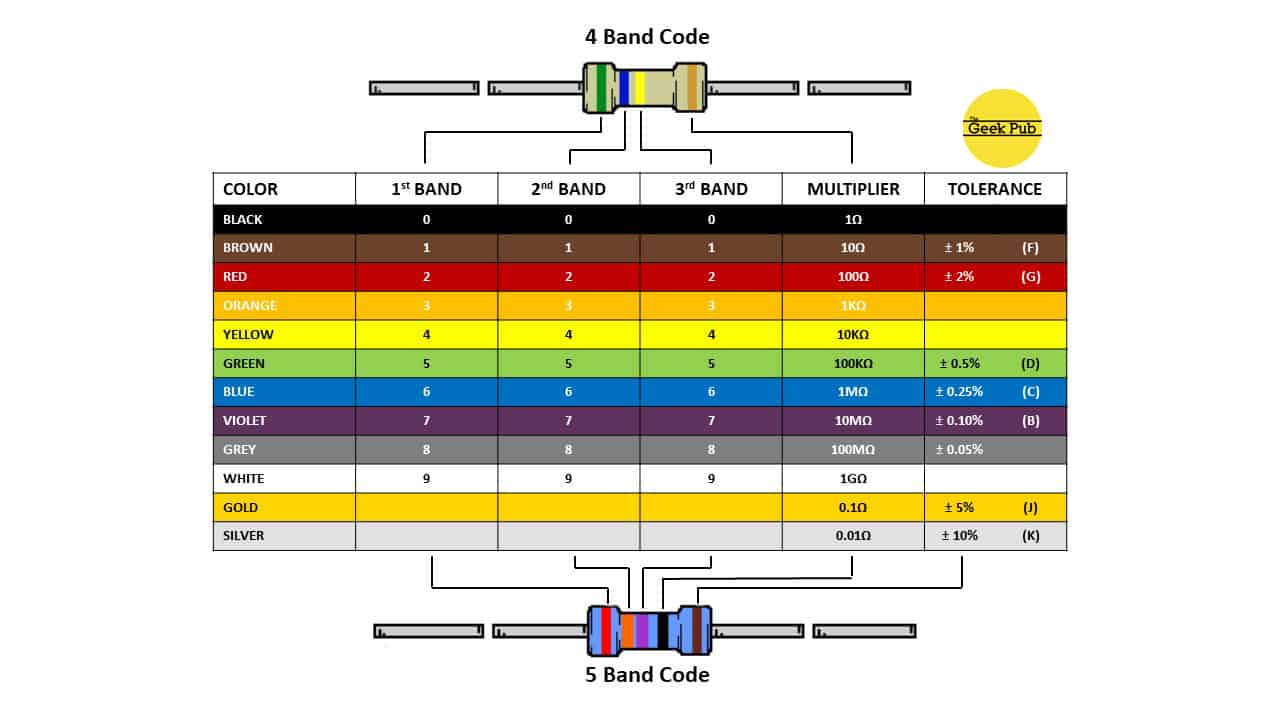Most orders for IN STOCK items placed by 12PM CST M-F ship SAME DAY. Orders for custom items and prints may take additional time to process.
This resistor calculator makes it a breeze to calculator resistor color codes. Carbon composition 1/8, 1/4, and 1/2 watt resistors all come in the same basic form factor and have either 4, 5, or 6 color bands. These types of resistor’s value is identified by the color pattern of these bands.
To calculate the resistance of a resistor, you can select the appropriate color bands in the above resistor color code calculator.
As mentioned, resistors will have either 4, 5, or 6 color bands. Select the correct calculator below based on the number of bands your resistor has.
[tabs slidertype=”top tabs”]
[tabcontainer]
[tabtext]4-Band[/tabtext]
[tabtext]5-Band[/tabtext]
[tabtext]6-Band[/tabtext]
[/tabcontainer]
[tabcontent]
[tab]
We’ve also worked up this fantastic little resistor color band chart you can use to calculate 4 and 5 band resistors easily. This handy chart can be printed out and kept near your resistor kits.
 Calculating Resistor Values
Calculating Resistor ValuesSometimes rather than using a resistor calculator, you just need to do it manually. Good news! It’s not that hard!
The formula for calculating a resistor is: R = ab X c ± d

This would make our resistor calculation as follows: 16 X 100 ± 5%. This means our resistor will be 1.6K Ohms (or 1600 Ohms) and be accurate to within plus/minus 5% of that value. Pretty easy right? You may also want to check out our resistor tutorial to learn more about resistors.
There are few exceptions to these rules you should know about.
High voltage resistors have a different chemical makeup due to the fact that their paints can not have metallic particles in them for safety and reliability purposes. Due to this, these high voltage resistors will often replace gold with yellow, and silver with gray. Don’t let this confuse you!
Believe it or not, there is a something called a zero-ohm resistor! It’s nothing more than a wire with a resistor package around it. These will be easily identifiable due to their single black band. These exist because machines of earlier era’s needed an easy way to install a jumper wire on printed circuit boards. To make this easy, they just reused the same machines that place resistors on the boards by creating a zero-ohm resistor! Neat trick!
You will most likely never encounter a military resistor (unless you join the armed forces!). These will often have an additional band that indicates the reliability rating in hours of the resistor, specifically for failure rate percentage per 1000 hours of service. If you’re interested, this is covered by milspec MIL-HDBK-199.
If you like our content maybe consider upgrading to Premium. You’ll get access to